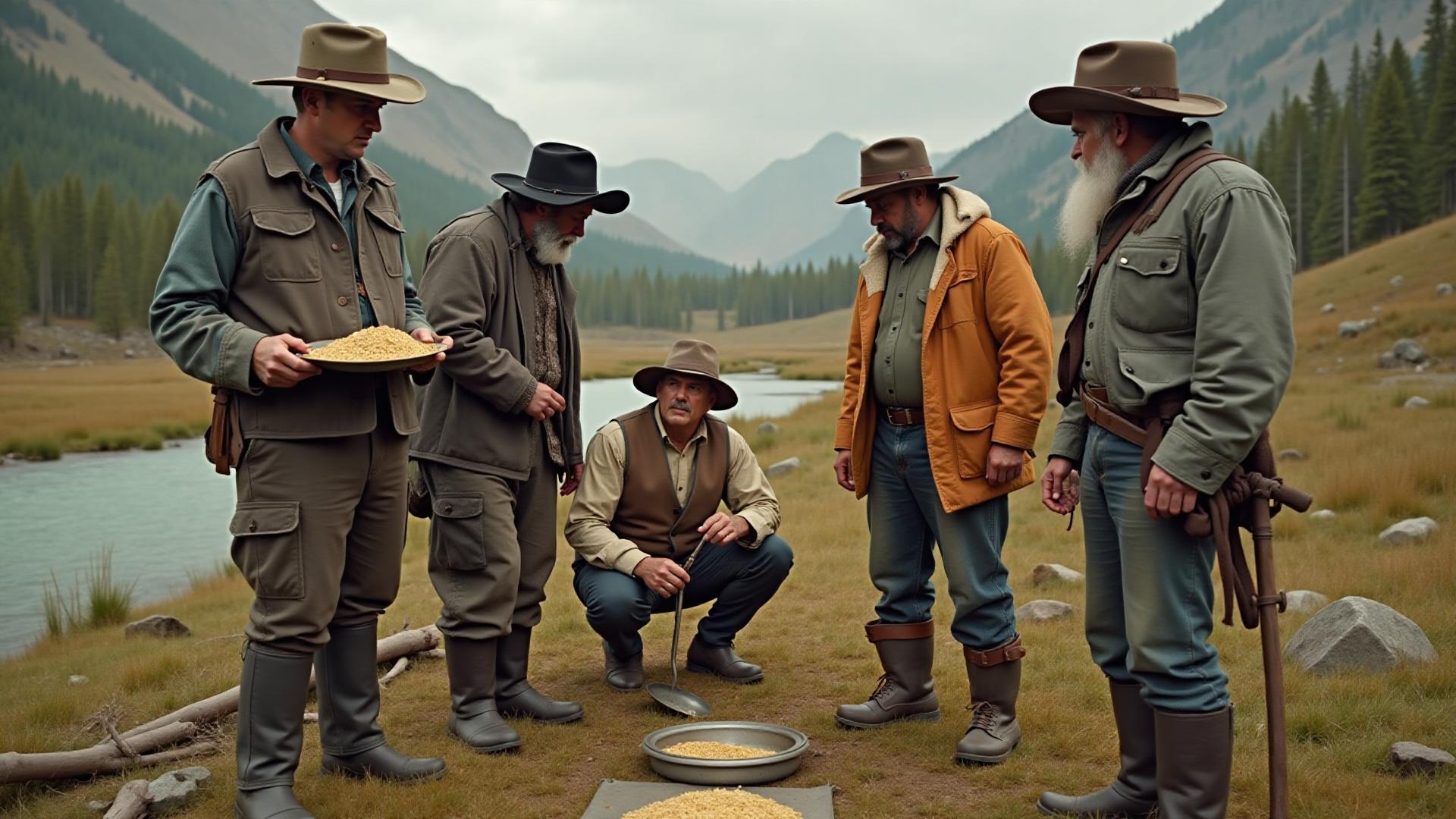George Washington Carmack (September 24, 1860 – June 5, 1922) is often credited as the central figure of the gold discovery that sparked the Klondike Gold Rush. However, the true story is far more complex and involves a remarkable team of individuals.
Early Life & Paths North
Carmack was born in Contra Costa County, California, and after losing both parents by age 11, he forged a rugged path through life. His early years were marked by hardship and determination, shaping the resourceful man who would later become famous.
He joined the U.S. Marine Corps, traveled to Alaska, and later wandered into prospecting, fishing, trapping, and trading ventures. By the 1880s–1890s, he had established relationships with Indigenous peoples in the northwest Yukon/Alaska region, including learning some local languages. This cultural bridge-building would prove crucial to his later success.
The Discovery Party
In mid-August 1896, Carmack traveled with Kate Carmack (Shaaw Tláa), her brother Skookum Jim (Keish), and their nephew Dawson Charlie (Káa Goox / Charles Henderson) near the Klondike region.
While camping by a stream called Rabbit Creek (later renamed Bonanza Creek), one of them spotted glinting particles in the gravel. They recognized it as gold—the moment that would trigger one of history's greatest stampedes.
The Discovery Party Members
George Washington Carmack
American prospector, officially credited as discoverer due to racial prejudices of the era
Kate Carmack (Shaaw Tláa)
Tagish woman, George's wife, present at discovery, vital contributor
Skookum Jim (Keish)
Kate's brother, Tagish Nation, likely the actual discoverer
Tagish Charlie (Káa Goox)
Kate's nephew, Tagish Nation, co-discoverer and claimant
The next day (August 17) they staked the Discovery Claim — four parcels of ground — two in Carmack's name (as discoverer), one for Jim, one for Dawson Charlie.
Why Was Carmack Credited?
There is considerable debate whether Skookum Jim or Kate Carmack actually made the first strike. Historical observers surmise that the group credited Carmack because authorities were more likely to validate a Euro-American claimant.
This decision reflected the racial prejudices of the 1890s. Indigenous people faced systematic discrimination in legal matters, including mining claims. By putting Carmack's name forward as the official discoverer, the group maximized their chances of having the claim recognized and protected.
This pragmatic choice, while ensuring their legal standing, has had lasting consequences for how history remembers the discovery. For decades, textbooks and popular accounts credited Carmack alone, marginalizing the crucial roles of Kate, Skookum Jim, and Tagish Charlie.
Later Life & Legacy
Carmack's fortunes rose dramatically after his discovery. The Discovery Claim and his other holdings made him wealthy—though not as wealthy as some Eldorado Creek claimants. He later left Kate (who had supported him through years of struggle), remarried, and invested profits in real estate and mining projects.
He continued prospecting for the rest of his life, never entirely satisfied with his wealth or status. The gold rush had given him fame and fortune, but also restlessness. He died in 1922 while working a claim—still searching, still dreaming of the next big strike.
Historically, modern scholarship tends to give greater credit to Skookum Jim and Tagish Charlie for their roles, recognizing that the "official" version of events obscured important truths about who actually discovered the gold and whose knowledge made the find possible.
A Complex Legacy
George Carmack's story is one of both achievement and moral complexity. He benefited from the labor and knowledge of his Indigenous family members, then later abandoned them when wealth arrived. He was credited for a discovery that may not have been solely his.
Yet his story also reflects the realities of his era—the racial hierarchies, the frontier ethics, and the desperate scramble for wealth that characterized the Klondike. Understanding Carmack means understanding the entire discovery party and acknowledging all their contributions.
